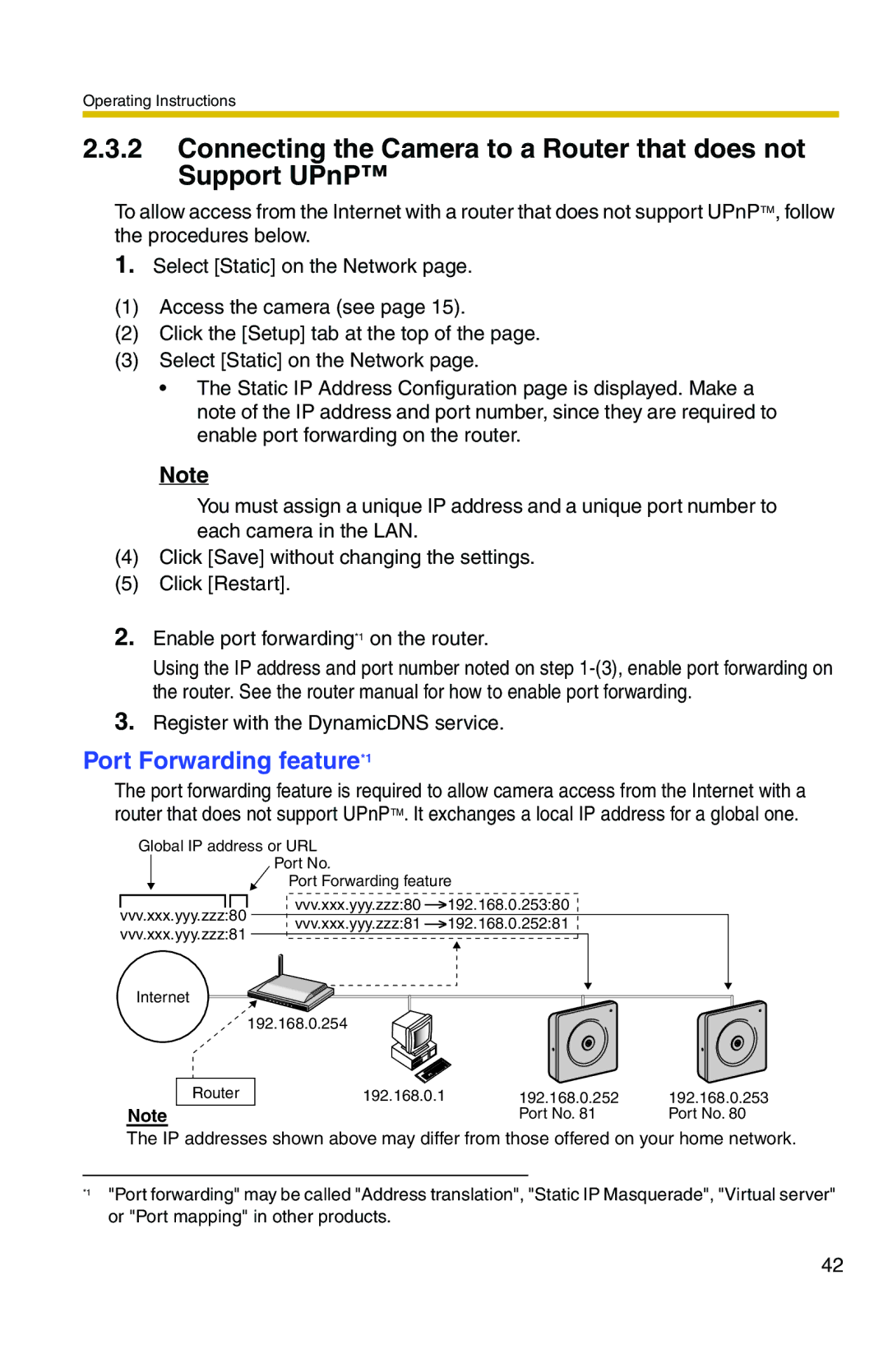
Operating Instructions
2.3.2Connecting the Camera to a Router that does not Support UPnP™
To allow access from the Internet with a router that does not support UPnPTM, follow the procedures below.
1.Select [Static] on the Network page.
(1)Access the camera (see page 15).
(2)Click the [Setup] tab at the top of the page.
(3)Select [Static] on the Network page.
•The Static IP Address Configuration page is displayed. Make a note of the IP address and port number, since they are required to enable port forwarding on the router.
Note
You must assign a unique IP address and a unique port number to each camera in the LAN.
(4)Click [Save] without changing the settings.
(5)Click [Restart].
2.Enable port forwarding*1 on the router.
Using the IP address and port number noted on step
3.Register with the DynamicDNS service.
Port Forwarding feature*1
The port forwarding feature is required to allow camera access from the Internet with a router that does not support UPnPTM. It exchanges a local IP address for a global one.
Global IP address or URL
Port No.
Port Forwarding feature
vvv.xxx.yyy.zzz:80 192.168.0.253:80
vvv.xxx.yyy.zzz:80 vvv.xxx.yyy.zzz:81 ![]() 192.168.0.252:81 vvv.xxx.yyy.zzz:81
192.168.0.252:81 vvv.xxx.yyy.zzz:81
Internet
192.168.0.254
Router
Note
192.168.0.1 | 192.168.0.252 | 192.168.0.253 |
| Port No. 81 | Port No. 80 |
The IP addresses shown above may differ from those offered on your home network.
*1 | "Port forwarding" may be called "Address translation", "Static IP Masquerade", "Virtual server" |
| or "Port mapping" in other products. |
42
